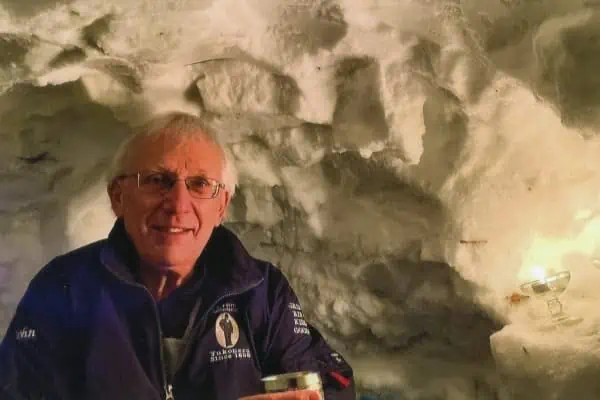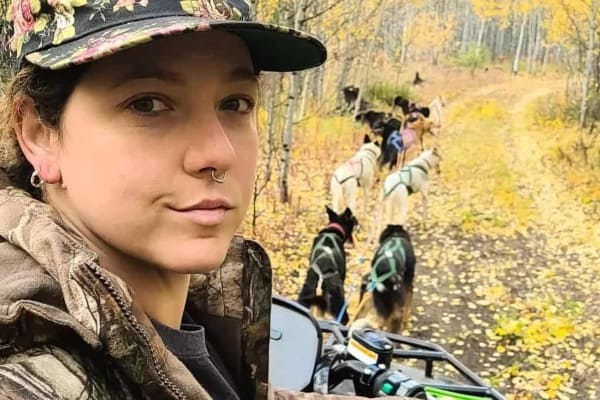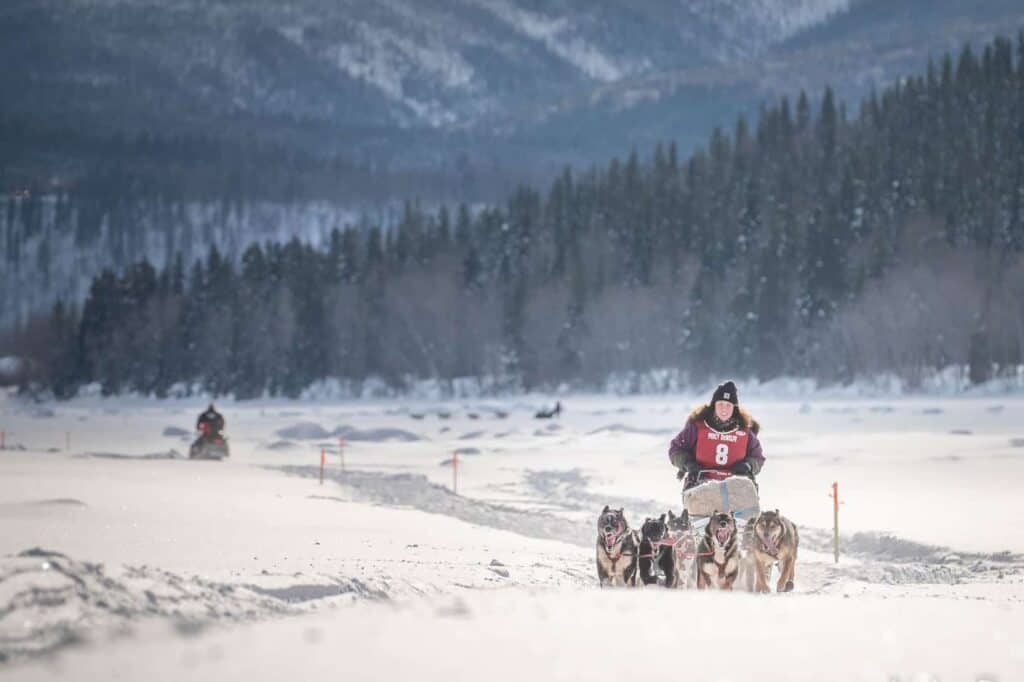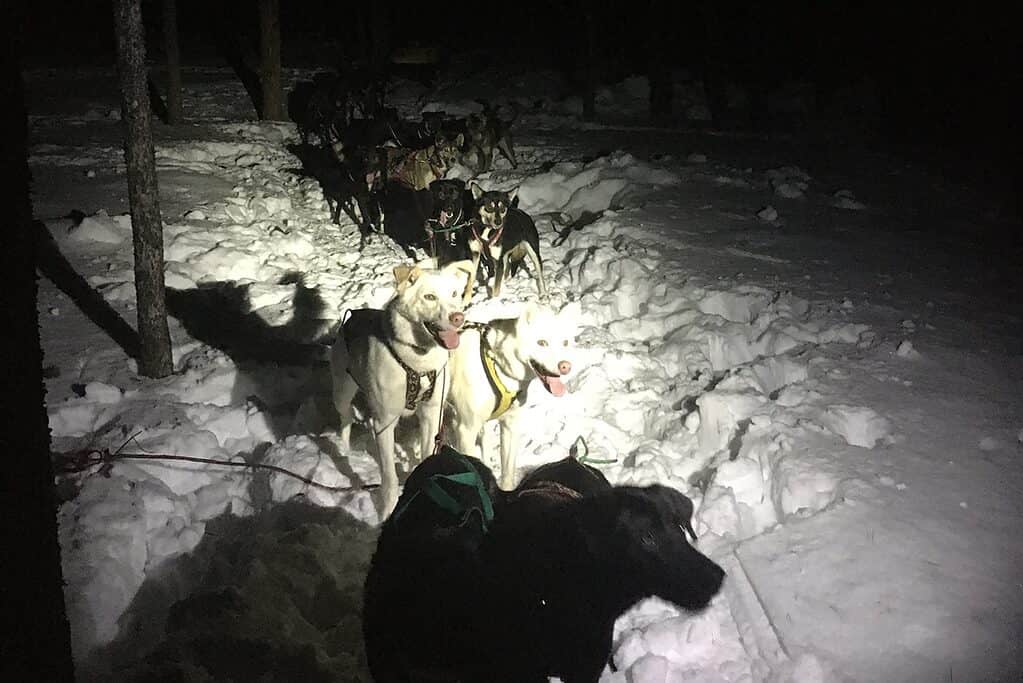A chance encounter with the Yukon Quest nine years ago changed Gaëtan Pierrard’s life.
“I made a first trip in 2002 and saw the Yukon Quest just by accident,” says the 34-year-old native of Belgium. “And that was on my mind when I was back in Europe.”
Three years ago, he moved to the Yukon to pursue his interest in dog-sledding.
“I was dreaming to be here, living in Canada with the winter. That was what I wanted, having a real winter, not a winter with rain, or sometimes snow and sometimes not. Something real.”
After working as a doghandler for other mushers, Pierrard decided to set out on his own, starting with a few dogs from Quest veterans Sebastian Schnuelle and William Kleedehn.
He now has six dogs and hopes to buy a sled next year. In the meantime, the Carcross-area surveyer has found the ideal outlet for his competitive instincts – skijoring.
“Skijoring was just the right stuff to do,” he says. “First, it’s quite inexpensive to start. Also, we are really close to the dogs. We spend a lot of time per dog.”
The sport of skijoring, from the Norwegian word meaning “ski driving,” involves the use of dogs, a horse, or even a motorized vehicle to pull a cross-country skier.
But the skier’s role is anything but passive. As Pierrard explains, it can involve a lot of skate-skiing.
“We work with the dogs. We sweat, and so it’s nice. I like it.”
While many recreational skijorers run with only one or two dogs, Pierrard prefers to use four.
“If you skijor three or four times a week, you get used to having four dogs, and it’s not that scary, really,” he says.
“People are sticking to two or three and thinking four is dangerous, but the more we train the less we have tangles and the dogs are all organized. It’s a matter of training.”
A rugged six-footer who lives near Carcross, Pierrard works in mining exploration during the summer, but spends his winters working with the dogs “as long as there is still money from the summer,” he admits.
Lately, he’s spent a lot of time in the bush, at temperatures of minus-30, logging as many as 70 miles a day in preparation for this weekend’s River Runner 100 (RR100), which involves both sled dog teams and skijorers.
“I’m moving, I’m working, so I don’t feel cold,” he says. “And that little sled can carry a sleeping bag, or a bigger parka. I have spare stuff for the cold – handwarmers and so forth – so this is my security system.”
The “little sled” he refers to is a pulk, made for him in Whitehorse. Skijoring with a pulk is known as “Norwegian mushing,” Pierrard explains. Pulks are mandatory equipment in the RR100.
Despite the name, the race is actually 130 miles long, from Whitehorse to Mendenhall, where there is a mandatory six-hour layover, then back to Whitehorse.
This is the second year the Dog Powered Sports Association of the Yukon (DPSAY) has held this mid-distance race.
Last year, under the name of the Road Runner 100, it followed the Alaska Highway from Whitehorse to Haines Junction, but ended at the Aishihik bridge when organizers discovered the trail ahead had been damaged by a motorized vehicle.
Yet, even at 99 miles, the event was considered the longest skijoring race in North America, and possibly the world, according to DPSAY spokesperson Amil Dupuis-Rossi. The extra mileage this year should cinch that title, Rossi says.
Last year’s problems with overflow and bumpy terrain beside the highway – more problematic for skijorers than for dogsleds, especially at night – persuaded the organizers to change to a river route.
“Because it’s run from Whitehorse to Mendenhall and back and a great deal of it is on the river, there’s still lots of places where spectators can go and watch the dog teams pass by,” Dupuis-Rossi says.
“The fact that it starts and finishes at Shipyards Park also makes it really spectator-friendly.”
With the extra distance, skijorers will definitely have their work cut out for them.
“I remember watching all of the skijorers coming in last year and man, they looked exhausted,” Dupuis-Rossi says.
“My partner, Darryl Sheepway, is one of these crazy people. We had to take his skis off for him at the end of the race because his legs cramped at the finish line. The dogs looked great though!”
The RR100 inaugural race involved 19 teams in the dogsled category, along with three skijorers. Crispin Studer finished first in the dogsled category, while Pierrard came in ahead of both Jonathan Lucas and Sheepway to win the skijoring category.
Had the two categories been combined, Pierrard would still have finished in the top 10, something the defending skijor champ shrugs off.
“In the total ranking, I have no hope. I’m not competing against sleds. Even against skijorers, it would be nice to finish strong and happy. It’s a long run, and we’ll see how I do.”
The River Runner 100 leaves Shipyards Park on Saturday, February 26 at 5 pm.




